Impulse control disorder: kinds, characteristics, causes, and effects
Table of content
- What is the definition of Impulse control disorder?
- What are the reasons for Impulse control disorder?
- What are the core characteristics of Impulse control disorder?
- What are the causes of Impulse control disorder?
- What are the effects of Impulse control disorder?
- What are the risk factors for Impulse control disorder?
- What are the treatment methods for Impulse control disorder?
- What are the Impulse control co-occurring disorders?
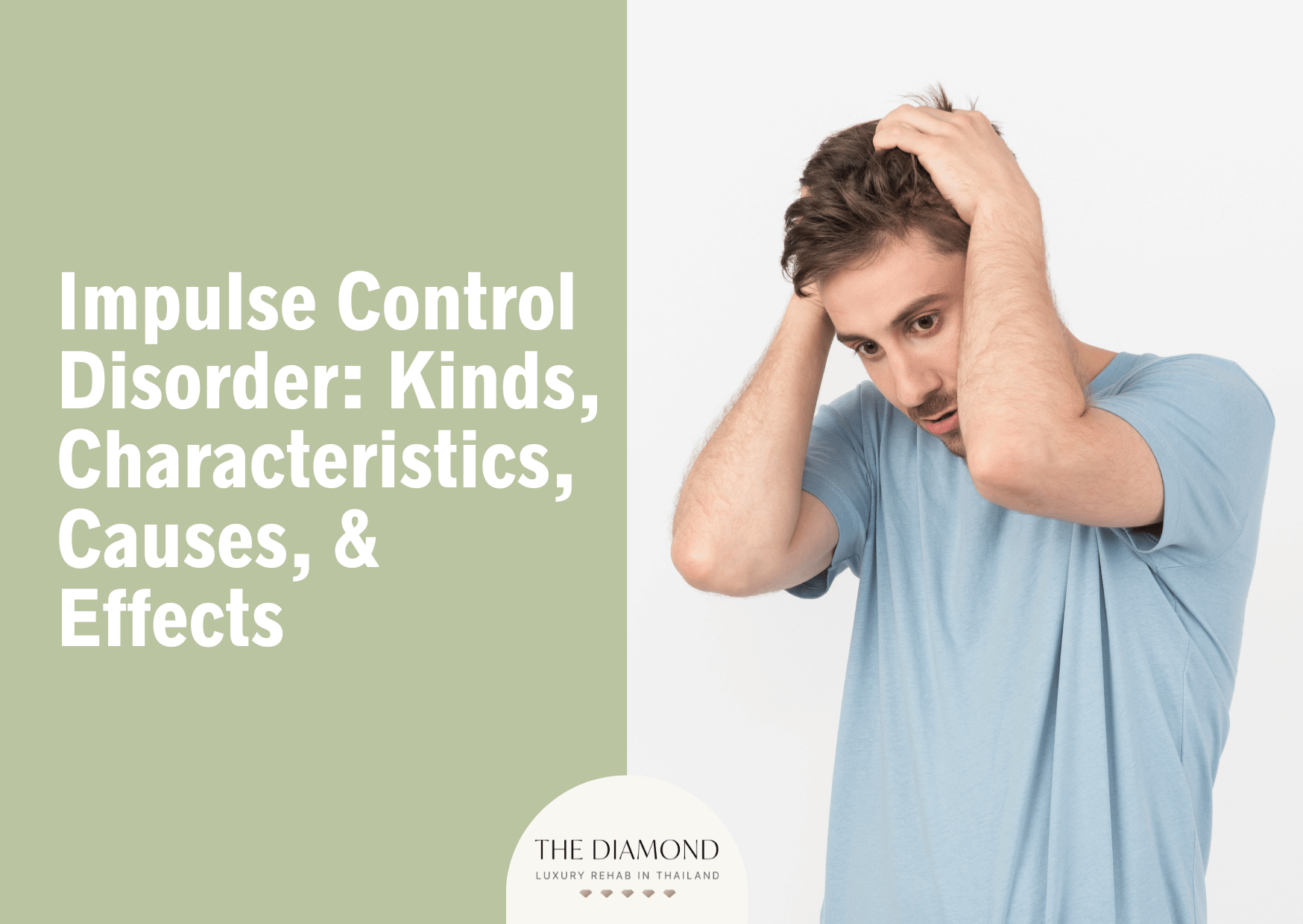
Impulse control disorder is a term that refers to a group of mental health disorders wherein a person is unable to control or ignore impulses to engage in certain behavior. People with these disorders are generally aware of their problematic behavior, but they’re not able to stop it.
The causes of impulse control disorders are genetic and environmental. In several cases, the exact cause is unclear and difficult to pinpoint.
On the other hand, the effects of impulse control disorder include problems at work or school, financial problems, legal troubles, self-harming behaviors, and difficulty maintaining healthy relationships.
Characteristics of impulse control disorder include repetitive or compulsive engagement in a behavior despite harmful consequences, a craving state before engagement in a specific behavior, lack of control over problematic behavior, and hedonic quality when performing the specific behavior.
Impulse control disorder treatments usually include a combination of therapy and medications.
What is the definition of Impulse control disorder?
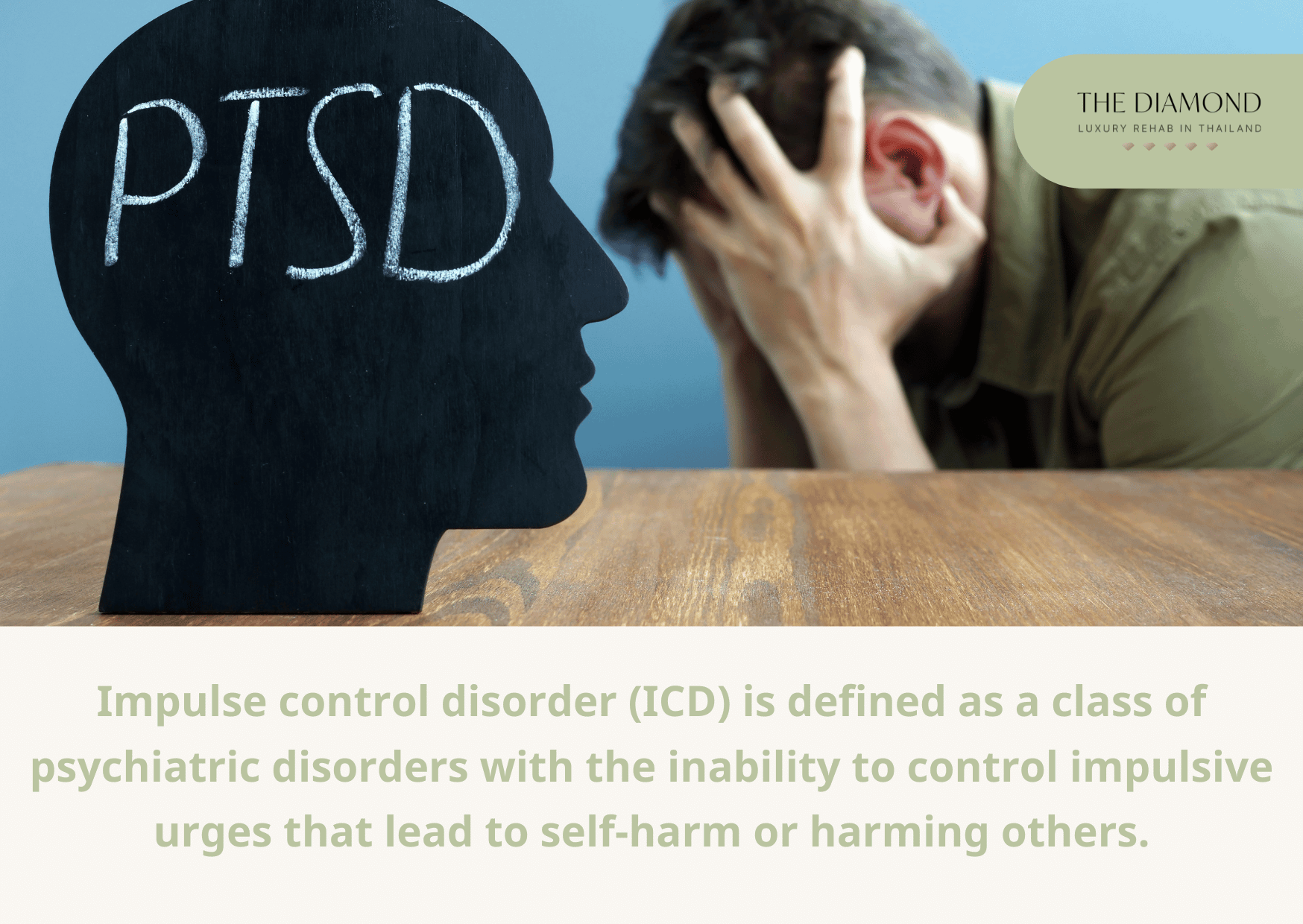
Impulse control disorder (ICD) is defined as a class of psychiatric disorders with the inability to control impulsive urges that lead to self-harm or harming others. Patients usually develop significant difficulties on a day-to-day basis due to impulse control issues.
In other words, the term impulse control disorder refers to all conditions where people have impulses that are difficult, or almost impossible, to resist or overcome.
These disorders have been recognized for a long time. Back in 1938, French psychiatrist Jean-Etienne Dominique Esquirol coined the term monomanies instinctives to describe behaviors indicated by irresistible urges and without a presence of a specific motive.
Monomanies included pyromania, kleptomania, impulsive homicide, and alcoholism. The main premise was that a person unwillingly performed deplorable acts due to uncontrollable impulses.
According to a study by Mukesh Changulani and Ajit Avasthi published in the 2001 issue of the Indian Journal of Psychiatry, kleptomania was used as a supplemental term in the Diagnostic and Statistical Manual of Mental Disorders, first edition (DSM-1) by the American Psychiatric Association, published in 1952. However, with the exception of the “explosive personality” category, DSM-II from 1968 made no mention of these disorders.
Things changed in 1980 with the publishing of DSM-3, when these conditions were initially classified as “disorders of impulse control”. The criteria for the 1987 revision of DSM-3 was modified to impulse control disorders not elsewhere classified, which was subsequently used for DSM-4, published in 1994. The category of impulse control disorders not elsewhere classified included pathological gambling, kleptomania, pyromania, trichotillomania, and intermittent explosive disorder, among others.
Changes in the classification of these disorders occurred in DSM-5, first published in 2003. The fifth edition of DSM-5 removes the “not elsewhere classified” part and officially recognizes these conditions as impulse-control disorders.
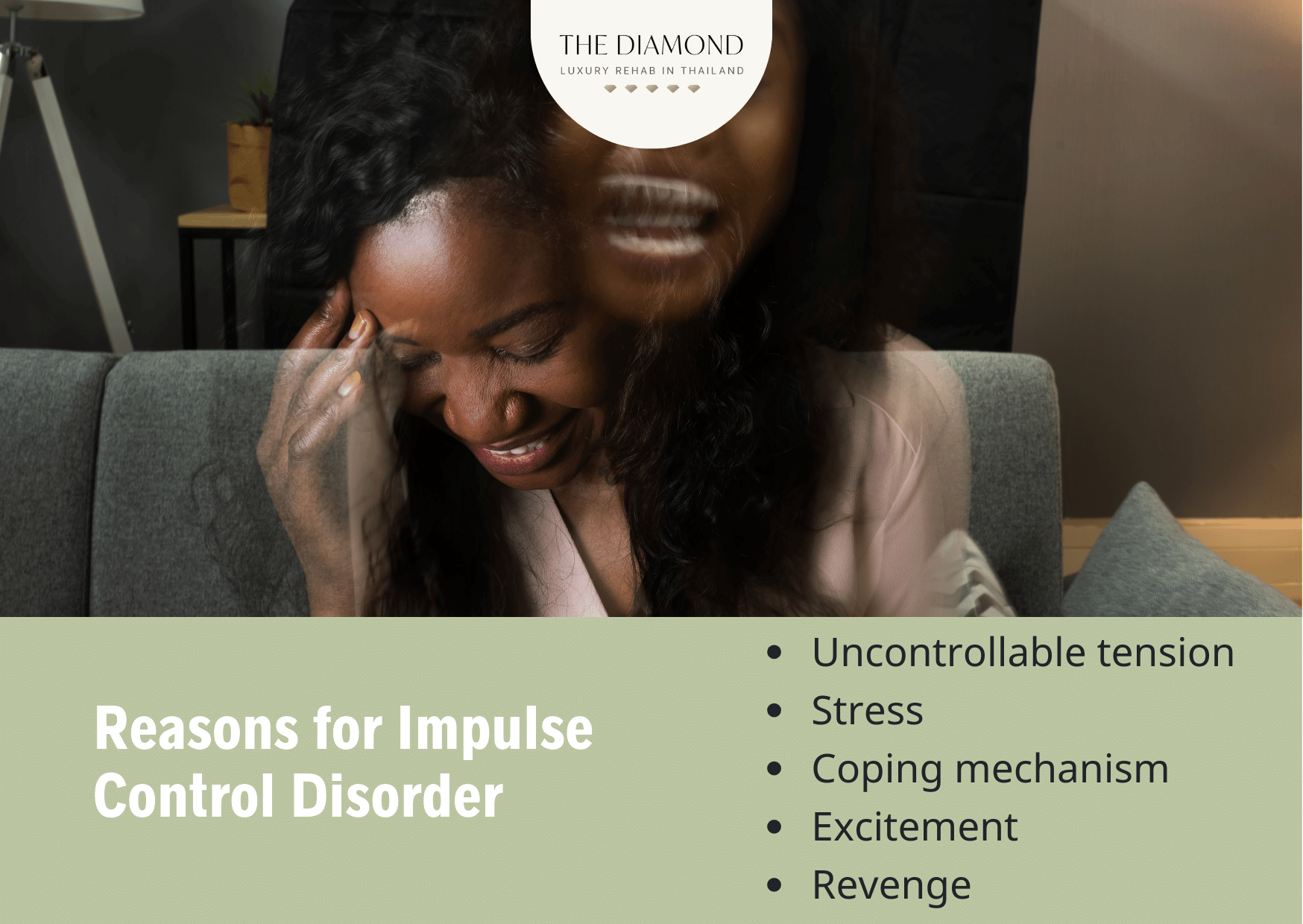
What are the reasons for Impulse control disorder?
The main reasons for impulse control disorder depend on the specific disorder. They’re different from causes. Reasons refer to potential motives behind specific actions. In most cases, these reasons are unknown. Impulsivity disorders are complicated, and it’s almost impossible to pinpoint specific reasons. The potential reasons for impulse control disorder are listed below.
- Uncontrollable tension
- Stress
- Coping mechanism
- Desire to achieve a sense of relief once a specific behavior is performed
- Lack of confidence and trying to increase it
- Excitement
- Revenge
- Boredom
What are the core characteristics of Impulse control disorder?
Core characteristics of impulse control disorder are impulsivity and compulsive behavior. The main features of impulse control disorder are listed below.
- Inability to resist the impulse, temptation, drive, or compulsive need to perform a specific act or behavior which is harmful to the person or others
- Increasing sense of arousal or tension prior to performing the act
- Experiencing a strong sense of pleasure, release, or gratification while performing the act
Every type of impulse control disorder has its specific traits. The types of impulse control disorders (ICDs) are listed below.
1. Trichotillomania

Trichotillomania, also known as a hair-pulling disorder, is a mental health disorder with recurrent or irresistible impulses to pull out hair from the scalp, eyebrows, eyelashes, and other parts of the body. These uncontrollable urges that lead to hair-pulling persist even when a person tries to stop.
People with trichotillomania, also called trich, tend to have patchy bald spots resulting in major distress. In most cases, the condition interferes with social or work functioning, a 2023 article titled, “Trichotillomania (hair-pulling disorder)” from Mayo Clinic explains.
Estimates show that five to 10 million people in the United States have trichotillomania. Numbers additionally reveal that six out of 1000 people will develop this disorder at some point in their lifetime, according to a 2020 post titled, “Trichotillomania – Facts and Treatment” from the Anxiety & Depression Association of America.
Another 2013 report by Huynh et al., published in the journal Seminars in Cutaneous Medicine and Surgery showed that the overall prevalence of trichotillomania is between 0.6% and 4.0%. That said, statistical information is tricky to gather for many organizations primarily because people with trichotillomania are often in denial, i.e., they believe they don’t have a problem or they refuse to seek professional help for their condition. That means these numbers are possibly higher.
The exact causes of trichotillomania are unclear. Like many other disorders, this one has both environmental and genetic components. Similarities between trichotillomania and OCD imply the involvement of the serotonergic transmitter system in this disorder. The way a person deals with stress and changes in hormone levels during puberty additionally contribute to the development of hair-pulling disorder.
Effects of trichotillomania are numerous but revolve around noticeable hair loss and bald areas. The condition causes emotional distress in the form of shame, embarrassment, and humiliation. People with trich struggle with anxiety, depression, and low self-esteem.
Emotional distress caused by trichotillomania leads to problems with work or social functioning. A person is likely to avoid social occasions and tend to isolate themselves from others. They tend to avoid intimacy, job opportunities, and various activities as well.
The constant hair-pulling often leads to damage to hair and skin. Effects of trichotillomania include scarring, infections, inflammation, and other problems. When left unmanaged, the condition destroys hair follicles and prevents future hair growth in that specific spot. For certain people, trichotillomania leads to another problem – eating hair. This leads to the development of trichobezoar, a matted hairball, in the digestive tract. Hairball is a serious problem that potentially leads to death.
To diagnose the condition, healthcare professionals first need to evaluate the extent of hair loss. During the process, they ask questions about hair loss and how a patient feels before, during, and after pulling their hair. Sometimes doctors order tests to rule out other potential causes behind this behavior. Trichotillomania is diagnosed when a patient meets the impulse control disorder DSM-5 criteria.
Trichotillomania affects the way people feel about themselves. The hair-pulling disorder tends to exhibit detrimental effects on a person’s mental health and wellbeing. For that reason, patients with trichotillomania need a strong support system and proper treatment to feel better and improve their quality of life.
2. Intermittent explosive disorder

Intermittent explosive disorder (IED) is a mental health disorder that involves repeated and sudden episodes of angry and violent outbursts wherein a person reacts out of proportion to the situation.
In other words, a person with IED tends to become furious and violent for a reason that generally isn’t that serious. Their reactions are irrational. Domestic abuse, road rage, and other forms of temper tantrums are potential signs of intermittent explosive disorder (IED).
As a chronic disorder, IED persists for several years. The severity of outbursts is likely to reduce with age or with proper treatment.
The lifetime incidence of intermittent explosive disorder is estimated to be between 1 and 7 percent, depending on the research population, according to a 2021 research article written by Emil Coccaro for UpToDate. A major setback in determining the prevalence of IED is that most studies rely on criteria from DSM-4 instead of DSM-5. However, numbers do show that the lifetime prevalence of IED worldwide is 1% to 4%, and the 12-month prevalence is around 1% to 3%.
Moreover, it’s important to mention that a study from the Epidemiology and Psychiatric Sciences found that across all countries, the lifetime prevalence of IED was 0.8%. Together, the two subtypes of anger attacks that caused injury to people—”hurt people only” and “destroy property and hurt people”—accounted for 73% of IED cases.
While statistics vary from one study to another, they do have something in common – evidence shows the rates of IED are likely even higher. This is especially if we take into account different criteria they use and the fact that plenty of people don’t get professional help and, thereby medical diagnosis.
The condition often begins in childhood after the age of six, but it is likely to start in adolescence as well. Intermittent explosive disorder affects younger adults more often than older adults. While the exact cause of IED is unknown, it potentially has environmental, genetic, and biological components. Sometimes a combination of different causes contributes to the development of IEDs.
Environmental causes of intermittent explosive disorder include growing up in a hostile or abusive household. Being exposed to aggressive and violent behaviors at a young age often makes children adopt these behavioral patterns while they’re growing up.
The genetic component of IED has something to do with family history. More precisely, a person is more likely to develop IED if their parents have the disorder. Finally, a biological component refers to differences in how the brain works. A person with IED has differences in the structure or function of their brain as well as impaired levels of neurotransmitters.
Effects of intermittent explosive disorder include disciplinary problems in school, financial difficulties, impaired educational or occupational ability, academic failure, marital discord, failed relationships, and social isolation. The disorder negatively affects almost every aspect of a person’s life.
Diagnosis of intermittent explosive disorder involves a physical exam, psychological evaluation, and the use of DSM-5 criteria. The main objective of the diagnostic process is to rule out other potential causes of violent behavior such as substance abuse. Doctors diagnose IED when a patient meets the criteria outlined in DSM-5.Intermittent explosive disorder often prevents a person from maintaining stable relationships. The condition additionally increases the risk of various mental and physical health issues such as anxiety and depression, ADHD, hypertension, substance abuse, engaging in risky behaviors, chronic headache, eating disorders, diabetes, heart disease, ulcers, chronic pain, stroke, self-harm, and suicidal thoughts and tendencies.
3. Kleptomania
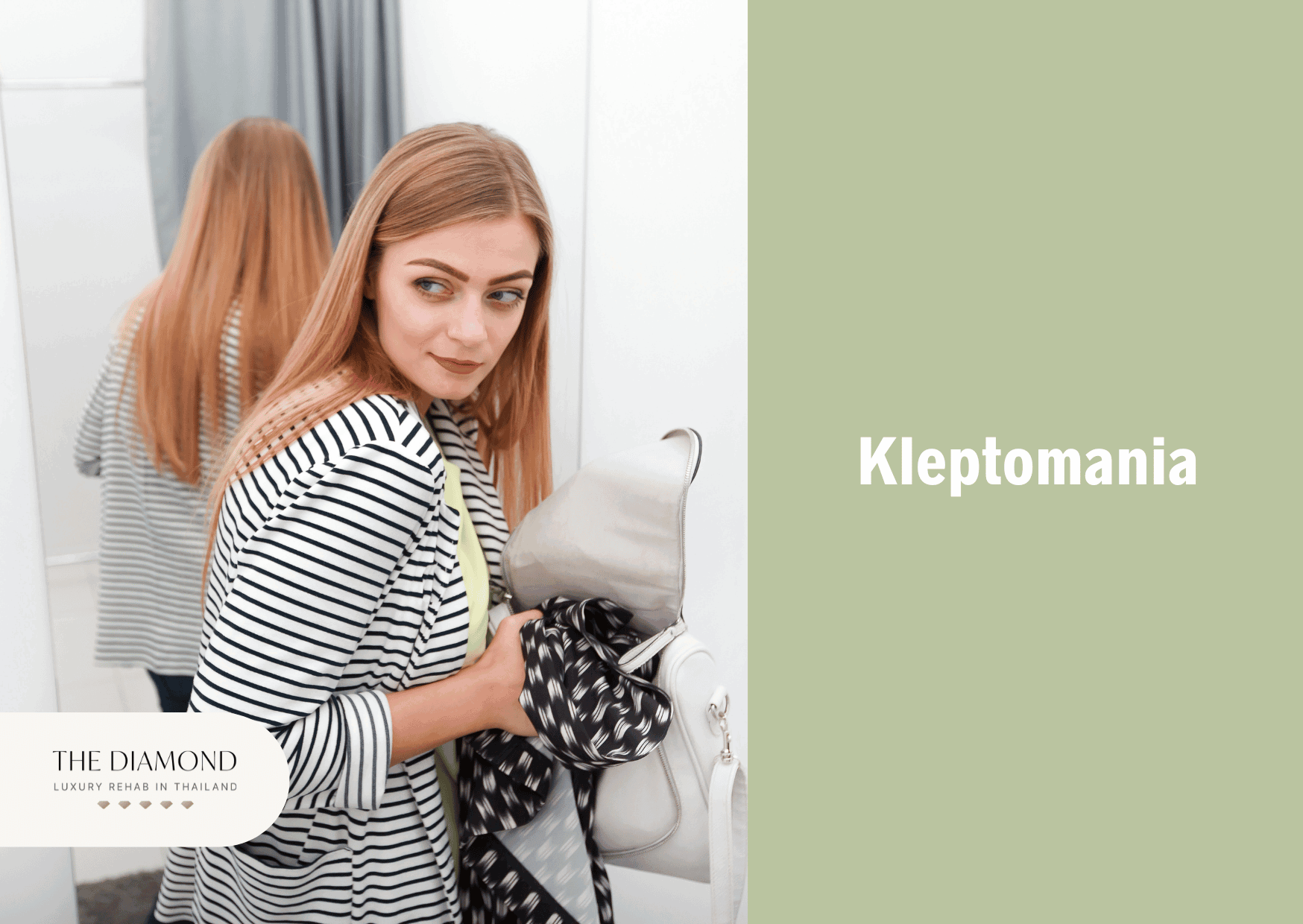
Kleptomania is a persistent neurotic impulse to steal. A person with kleptomania experiences a recurrent inability to resist the compulsive need to steal items they don’t need or have little to no value.
Kleptomania is not the same thing as shoplifting or “ordinary” stealing. Ordinary stealing or shoplifting is premeditated, a person often plans to take something, and it’s usually for financial gain or because they believe they need the object.
On the other hand, a person with kleptomania doesn’t plan to take something. They don’t need things they steal, and they don’t take them to achieve any form of gain or benefit from it. Instead, they’re not able to control the need to take something.
While shoplifting is common, kleptomania is relatively rare. Estimates from experts indicate that it impacts approximately 0.3% to 0.6% of the U.S. population, according to an article titled, “Kleptomania” last reviewed in June 2022 by Cleveland Clinic.
Meanwhile, a 2004 study by Aboujaoude et al., published in The Primary Care Companion to the Journal of Clinical Psychiatry revealed that six in 1000 people have kleptomania and around 1.2 million people in the United States have this form of impulse control disorder.
The exact cause of kleptomania is largely unfamiliar. Changes in the brain potentially propel the formation of this disorder. Scientists believe kleptomania is associated with low levels of the neurotransmitter serotonin, but it’s linked to addictive disorders and the brain’s opioid system as well. After all, imbalances in the opioid system make it difficult to resist the impulses to steal.
The act of stealing promotes the release of dopamine, a feel-good chemical that regulates the brain’s reward system. This explains why people with kleptomania feel good immediately after taking something. For that reason, they want to experience the same emotions again and repeat the behavior.
Effects of kleptomania include severe emotional, financial, occupational, legal, and family problems. When left untreated, kleptomania leads to other impulse control disorders, alcoholism and substance abuse, anxiety, and depression, eating disorders, personality disorders, and suicidal thoughts and tendencies.
The diagnostic process includes both physical and psychological evaluation. The main objective of the physical evaluation is to determine the potential presence of physical causes that trigger kleptomania.
Healthcare professionals diagnose kleptomania based on patients’ symptoms and whether they meet the criteria from DSM-5. The doctor is likely to ask questions about impulses and how they make a person feel. To make an accurate diagnosis, a healthcare provider additionally reviews a list of situations to see whether they trigger kleptomania.
Patients receive a questionnaire about symptoms, impulses, and behaviors. Kleptomania has a strong impact on a person’s mental health and wellbeing, and it has a harmful effect on their life. A person with kleptomania doesn’t like to steal. They don’t even want to do so. However, they’re not able to resist the urge to steal. More precisely, they feel powerless about it. Individuals with kleptomania live in fear of being arrested. Their impulsive need to steal jeopardizes relationships, social life, and career.
4. Pyromania

Pyromania is a type of impulse control disorder indicated by the inability to resist starting fires. While people with pyromania are aware starting fires is harmful and dangerous, that is the only way to relieve built-up anxiety, tension, or arousal. They are unable to stop this behavior.
Although the terms pyromania and arson are used interchangeably, they’re not the same. Both pyromania and arson are intentional, but pyromania is strictly compulsive or pathological. Arson isn’t necessarily pathological.
Pyromania is rare and isn’t studied as extensively as other forms of impulse control disorders. According to chapter 11 of the book The Oxford Handbook of Impulse Control Disorders titled, “Pyromania: Phenomenology and Epidemiology” by Michel Lejoyeux and Candice Germain, 1% of the American population will set fire at some point in their lives. There was a 3.4% prevalence of pyromania in adult psychiatric inpatients, with a lifetime frequency of 5.9%.
Similar to other conditions, potential causes of pyromania include genetics, certain stressors, and imbalances of neurotransmitters. It is thought that impulsivity is largely inherited, meaning disorders like pyromania could have a genetic component, a 2019 article written by Jamie Elmer for Healthline reports. Genes influence neurotransmitters such as dopamine and serotonin.
The effects of pyromania include psychiatric issues, including substance abuse, anxiety, depression, learning disabilities, and mood disorders. Additionally, pyromania harms a person setting fires as well as other people and property.
Due to a lack of research and strict criteria, pyromania is rarely diagnosed. This explains the low prevalence of the disorder, too. Furthermore, to establish a diagnosis, a person needs to actively seek help for their condition. People with pyromania don’t typically do that. Sometimes a person receives treatment for other mental health problems such as depression, and healthcare professionals notice they also meet DSM-5 criteria for pyromania. In certain cases, persons charged with arson undergo evaluation for pyromania.
Pyromania is one of the most dangerous impulse control disorders. The consequences of pyromania affect both a person who sets a fire and other people. Understanding that setting fires is bad isn’t enough for a pyromaniac to stop. Despite their efforts, they are unable to stop because setting fire is the only way they’re able to get rid of accumulated tension. The inner struggle is sometimes unbearable and leads to problems with mental health, impaired work performance, problems with family and friends, legal issues, and potential arrest.
5. Compulsive sexual behavior

Compulsive sexual behavior is an excessive preoccupation with sexual urges, behaviors, and fantasies that are difficult to control and cause significant distress. Otherwise known as hypersexuality, compulsive sexual behavior includes cybersex, masturbation, paying for sex, pornography, multiple sex partners, and other sexual activities and experiences.
According to a 2020 paper by Kowalewska et al., published in the journal Neuropsychiatric Disease and Treatment, in the US, 3% to 6% of persons suffer from compulsive sexual behavior (CSB). This disorder is more prevalent in men than women. Additionally, around 3% of adult women and 11% of adult males identify as “addicted to pornography” to some degree.
While the specific causes of compulsive sexual behavior are unclear, they potentially include conditions that affect the brain, changes in brain pathways, and an imbalance of neurotransmitters.
When it comes to conditions that affect the brain, certain health problems such as epilepsy and dementia damage brain areas that regulate sexual behavior. On the other hand, changes in brain pathways involve alterations in the reinforcement centers of the brain. For that reason, more intense sexual stimulation is necessary to achieve desired satisfaction.
Like other impulse control disorders, compulsive sexual behavior stems from excessively high levels of dopamine and serotonin.
Effects of compulsive sexual behavior include damaged self-esteem and problems with relationships and careers. An affected person’s health is in danger as well. Engaging in risky sexual activities increases the risk of sexually transmitted diseases that spread to other people too. The condition affects both physical and mental health as well as other aspects of life.
Psychological evaluation is necessary for the diagnosis of compulsive sexual behavior. During this process, a healthcare professional asks questions regarding the physical and mental health of a patient, their emotional wellbeing, sexual thoughts, and behaviors or compulsions that are difficult to control. Patients additionally receive questions about the use of alcohol and recreational drugs, family and relationships or social life, and whether their sexual behavior has caused any problems.
Mental health professionals rely on criteria from DSM-5 to diagnose compulsive sexual behavior. Since DSM-5 doesn’t feature the diagnostic criteria for this condition, doctors may diagnose it as a subcategory of another mental health problem. Healthcare professionals diagnose compulsive sexual behavior when patients exhibit sexual activities that are taken to the extreme or have severe negative consequences.
Compulsive sexual behavior affects a person in countless ways. Persons with hypersexuality struggle with feelings of shame and guilt that lead to low self-esteem. Their sexual behaviors tend to pave the way to other mental health problems, including anxiety and depression.
Even when they try to stop their behavior, the impulses are too strong and impossible to resist. For that reason, men and women with compulsive sexual behavior need a well-structured treatment program.
6. Compulsive buying

Compulsive buying is a chronic and repetitive purchase that is difficult to control. For an affected individual, buying becomes the main response to negative feelings and events. Like other impulse control disorders, this condition includes behavior that a person isn’t able to stop repeating. Even when they try to stop shopping, the tension becomes so high the only way to release it is to make a purchase.
More than one in 20 adults in the U.S. suffers from compulsive buying. The prevalence of the disorder is similar among men and women, 5.5% and 6%, respectively, according to a 2006 study by Koran et al., published in The American Journal of Psychiatry. The gender-adjusted prevalence rate was 5.8%.
The causes of compulsive shopping are largely psychological. In most cases, loneliness, depression, and helplessness trigger the impulse to spend money in order to relieve stress and feel better. Not every person who shops to feel better is a compulsive shopper. The difference between normal shopping and compulsive buying is that the latter causes significant distress and major adverse consequences.
Effects of compulsive buying include substantial debts, personal distress, marital conflict, and legal problems. When left unmanaged, compulsive buying contributes to, or worsens mental health conditions including depression, eating disorders, and substance abuse.
Since compulsive buying is not listed in the DSM-5, it’s difficult to diagnose. Mental health professionals are likely to perform a psychological evaluation to determine whether a patient has a compulsive buying disorder or not.
What makes compulsive buying complicated is that patients use it to cope with negative emotions and other stimuli. However, these emotions worsen. While spending money releases tensions and produces pleasant feelings, these results are short-term. Immediately after that, people feel guilty and disappointed in themselves. All of this leads to a worsening of their mental health. Since this disorder includes a lot of hiding or concealing the truth about the amount of money spent, people often jeopardize their relationships and family dynamics.
7. Pathological gambling
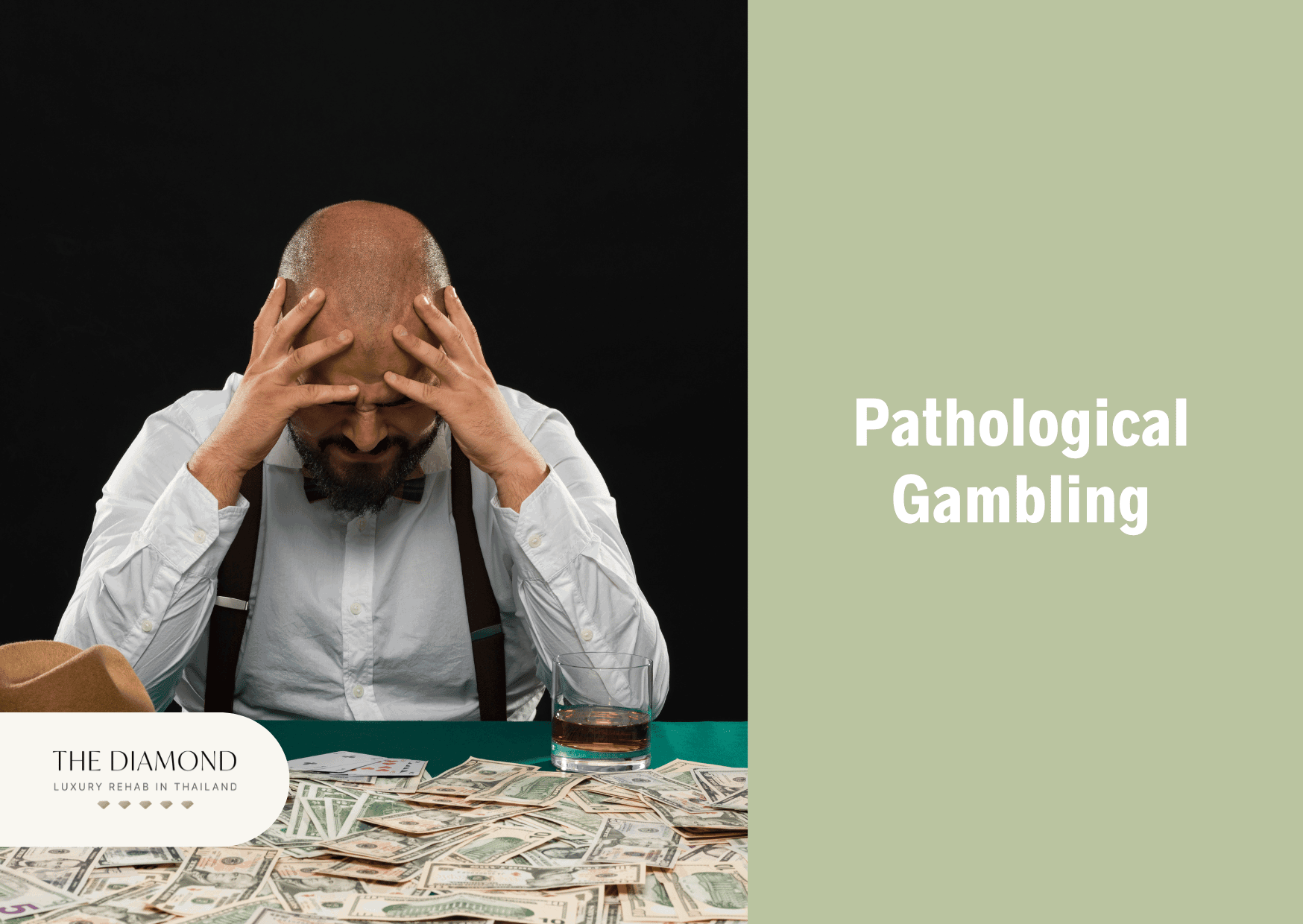
Pathological gambling is the uncontrollable urge to continue gambling despite the negative consequences it causes. Pathological gamblers attempt to quit gambling, but the impulses are so strong and difficult to resist. For that reason, compulsive gambling destroys lives.
Results from a study by Welte et al., published in the June 2014 issue of the Journal of Gambling Studies showed that two to four million adults, or between 1.4% and 2% of the adult population of the United States, will develop a gambling disorder during their lifetime. The rates are possibly higher, as various people don’t seek help for pathological gambling.
It’s not understood what causes pathological gambling. A combination of genetic, environmental, and biological factors potentially play a role. People with pathological gambling often have an underlying mental health disorder or they’re influenced by family and friends.
Effects of pathological gambling include financial losses, debt, and even bankruptcy. Relationship problems and trouble at work are among the consequences of this condition. Legal problems additionally happen because pathological gamblers tend to engage in risky activities to get more money to use for gambling.
Diagnosis of pathological gambling includes questions regarding gambling habits and a review of medical information. The latter is necessary because the side effects of some drugs include impulsive behaviors.
The main component of the diagnostic process is a psychological evaluation. Doctors diagnose this form of impulse control disorder if a patient meets the criteria from DSM-5.
Pathological gambling affects a person in several ways, primarily through stress, frustration, chasing losses, and lying about the extent of the problem. Gamblers tend to feel like they’re about to start their winning streak and when it doesn’t happen it causes serious mental and emotional distress. Gambling is dangerous because it leads to debt, relationship problems, and puts one’s life in danger especially if a gambler owes money to dangerous individuals.
8. Pathological skin picking

Pathological skin picking (PSP) is the repetitive manipulation of the skin that causes scars, wounds, social impairment, and emotional distress. As a distinct disorder, PSP was first recognized in DSM-5. Before that, the condition was called excoriation or skin picking disorder.
At this point, there is no official information about the prevalence of pathological skin picking. However, 1.4% of the population develops excoriation at some point in their lives, according to a study by Gallinat et al., published in the October 2021 issue of Frontiers in Psychiatry.
Co-occurring psychiatric disorder is among the most common causes of pathological skin picking. People with PSP tend to have depression and anxiety disorders, especially OCD as well. Besides psychiatric disorders, an imbalance of neurotransmitters in the brain additionally contributes to the development of pathological skin picking.
Effects of PSP include primarily scars, wounds, infections, and various problems on the skin. The condition has a major impact on mental health and aggravates the above mentioned co-occurring psychiatric disorders.
Diagnosis of pathological skin picking includes a combination of a physical exam and psychological evaluation. Healthcare professionals need to make sure whether skin picking results from an underlying medical condition. Moreover, the criteria for PSP diagnosis state the condition isn’t fully explained by other disorders. Doctors diagnose pathological skin picking based on criteria from DSM-5.People with PSP have low self-esteem, tend to cover their wounds and scars, and the majority of them avoid social activities and hanging out with other people. Pathological skin picking deeply hurts a person’s confidence and worsens their social isolation. They miss out on various opportunities in their professional and private life due to the tendency to avoid other people.

What are the causes of Impulse control disorder?
The causes of impulse control disorders generally include genetic, biological, and environmental components. They depend on the specific disorder. The genetic component involves genes that affect the balance of neurotransmitters and contribute to impulsive behaviors.
Biological causes include excessive levels of dopamine and serotonin which contribute to award seeking and impulsivity. The environmental component refers to exposure to certain behaviors in childhood or later life.People engage in certain compulsive or pathological behaviors to deal with negative emotions. These behaviors become their coping mechanisms.
What are the effects of Impulse control disorder?
Effects of impulse control disorder include self-harm and a high risk of harming others. Further effects include difficulty maintaining or forming relationships with other people, academic or professional failure, and engaging in risky behaviors.
Self-esteem suffers in people with these disorders. They tend to struggle with financial difficulties, legal troubles, marital issues, and other complications. The consequences of impulsive disorders become worse if a person doesn’t receive adequate treatment.
What are the risk factors for Impulse control disorder?
Risk factors for impulse control disorder include genetic predisposition, being a male, and chronic drug or alcohol use. Other factors that increase the risk of developing impulse control disorder include a history of trauma, neglect or abuse, and exposure to violence and aggression.
Certain medications, such as dopamine agonists prescribed for patients with Parkinson’s disease, potentially increase the risk of impulsive behaviors.A low socioeconomic background, having acquaintances involved in illicit and deviant behaviors, and a lack of stability at home or in school could also contribute to the development of impulse control disorder, a 2023 article written by Veronica Zambon for Medical News Today explains.

What are the treatment methods for Impulse control disorder?
Treatment methods for impulse control disorder rely on psychotherapy and medications. A combination of the two is necessary for some patients. The most widely used treatment option for patients with impulse control disorders is cognitive-behavioral therapy (CBT).
What makes CBT effective in impulsive control disorder treatment is that it focuses on the relationships between thoughts and behaviors. The therapist helps a patient replace a distorted thought process with more positive and realistic patterns.
This rationalizes their thoughts and allows patients to control their impulses more effectively. Additionally, CBT helps with underlying mental health problems too. Patients with impulse control disorder have individual therapy sessions, but group therapy or support group is beneficial as well.
When it comes to medications, there is no specific pill that treats impulse control disorder primarily. Doctors typically prescribe medications for an underlying mental health problem. For example, a person with depression is likely to receive antidepressants. Opioid antagonist medications help treat impulses and compulsive urges.
Boot camps, sudden imprisonment, and other drastic measures don’t aid in the treatment of impulse control disorder in adults and adolescents alike. Instead, they worsen the condition.
What are the Impulse control co-occurring disorders?
Impulse control co-occurring disorders are mental health conditions that occur at the same time with issues over impulse control. The conditions that tend to co-occur with impulse control disorder are listed below.
- Bipolar disorder
- Antisocial personality disorder
- Oppositional defiant disorder
- Conduct disorder
- Anxiety disorders
- PTSD
- Depression
1. Bipolar disorder
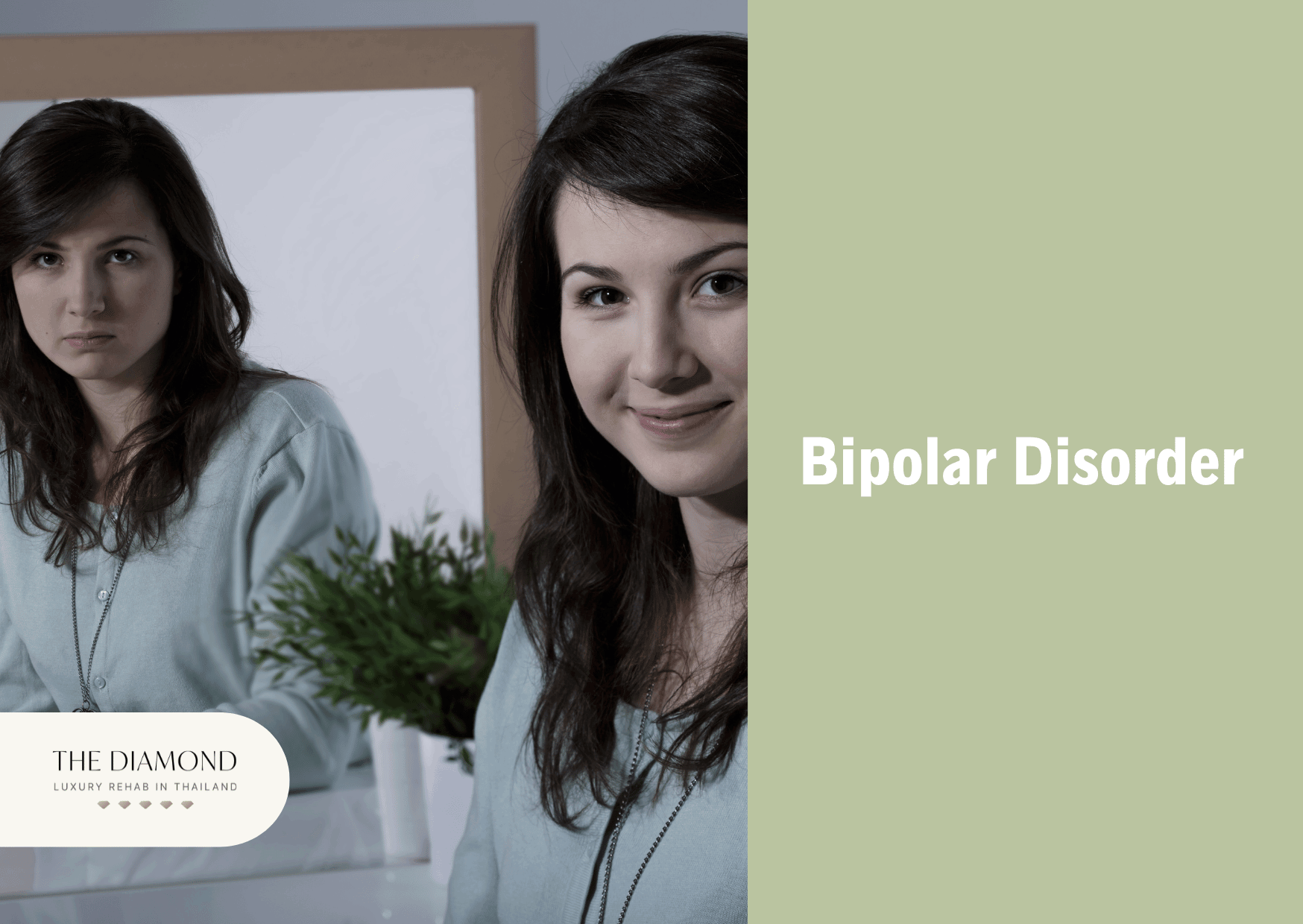
Bipolar disorder is a mental disorder that causes extreme changes in mood such as intense mood swings from emotional highs (mania) and lows (depression). A person with bipolar disorder experiences unusual changes in mood, energy and activity levels, concentration, and day-to-day activities. It is possible for them to be euphoric or hyperactive and suddenly get into a depression episode.
According to the National Institute of Mental Health, bipolar disorder affected an estimated 2.8% of adult Americans in the previous year. The prevalence is similar among men and women i.e. 2.9% and 2.8% respectively. The same report shows that 4.4% of adults in the United States will develop bipolar disorder at some point in their lifetime. The prevalence of bipolar disorder among adolescents is 2.9%.
Biological differences and genetics are potential causes of bipolar disorder. Patients with this condition tend to have physical changes in their brains. The genetic component of bipolar disorder stems from the fact that the risk is higher among persons whose first-degree relative has this condition.
Effects of bipolar disorder include damaged relationships, poor work or school performance, legal and financial problems, suicidal thoughts, and attempts. Besides the person with bipolar disorder, their friends and family feel the consequences due to changes in the patient’s behavior and mood.
Diagnosis of bipolar disorder includes a physical exam, psychiatric assessment, mood charting, and criteria from DSM-5. No two people have identical experiences with bipolar disorder. Sudden episodes of depression followed by mania contribute to feelings of hopelessness and helplessness. Patients develop low self-esteem, especially because the condition affects their decision-making. Bipolar disorder changes eating and sleeping patterns, meaning it affects the physical health of a patient too.
2. Antisocial personality disorder
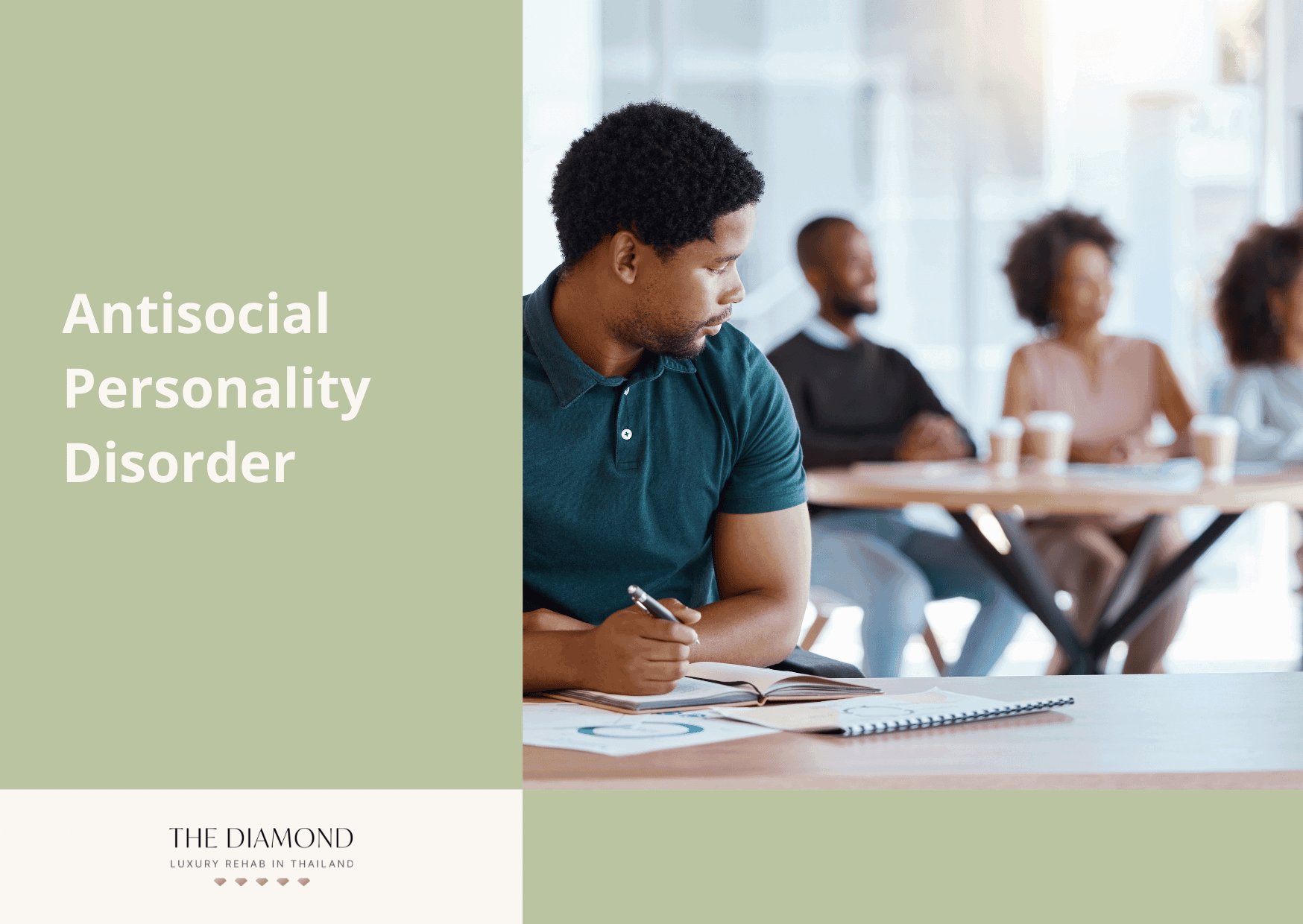
Antisocial personality disorder is a condition where a person lacks or ignores empathy and shows no regard for what’s right or wrong. Otherwise known as sociopathy, an antisocial personality disorder is a type of mental health problem where people manipulate others and unfairly treat them without experiencing guilt or remorse for their actions.
An article titled, “Antisocial Personality Disorder (ASPD)” last reviewed in October 2023 by the Cleveland Clinic stated that in the United States, antisocial personality disorder is thought to impact 1% to 4% of adults.
A combination of different causes leads to antisocial personality disorder. These include genetics and changes in brain function. Substance abuse and biological causes such as low serotonin are involved in the development of this disorder as well.
Antisocial personality disorder has severe effects including child neglect, spouse abuse, suicidal or homicidal behaviors, and problems with alcohol or substance use.
Diagnosis of antisocial personality disorder relies on psychological evaluation, medical and personal history, and symptoms listed in DSM-5. The disorder is usually diagnosed in adulthood, but symptoms tend to appear earlier.An antisocial personality disorder affects a person by taking away their sense of empathy and remorse. Someone with this condition hurts others physically or verbally, but they don’t feel guilty for their actions. The condition results in broken relationships, arrests, and other problems.
3. Oppositional defiant disorder
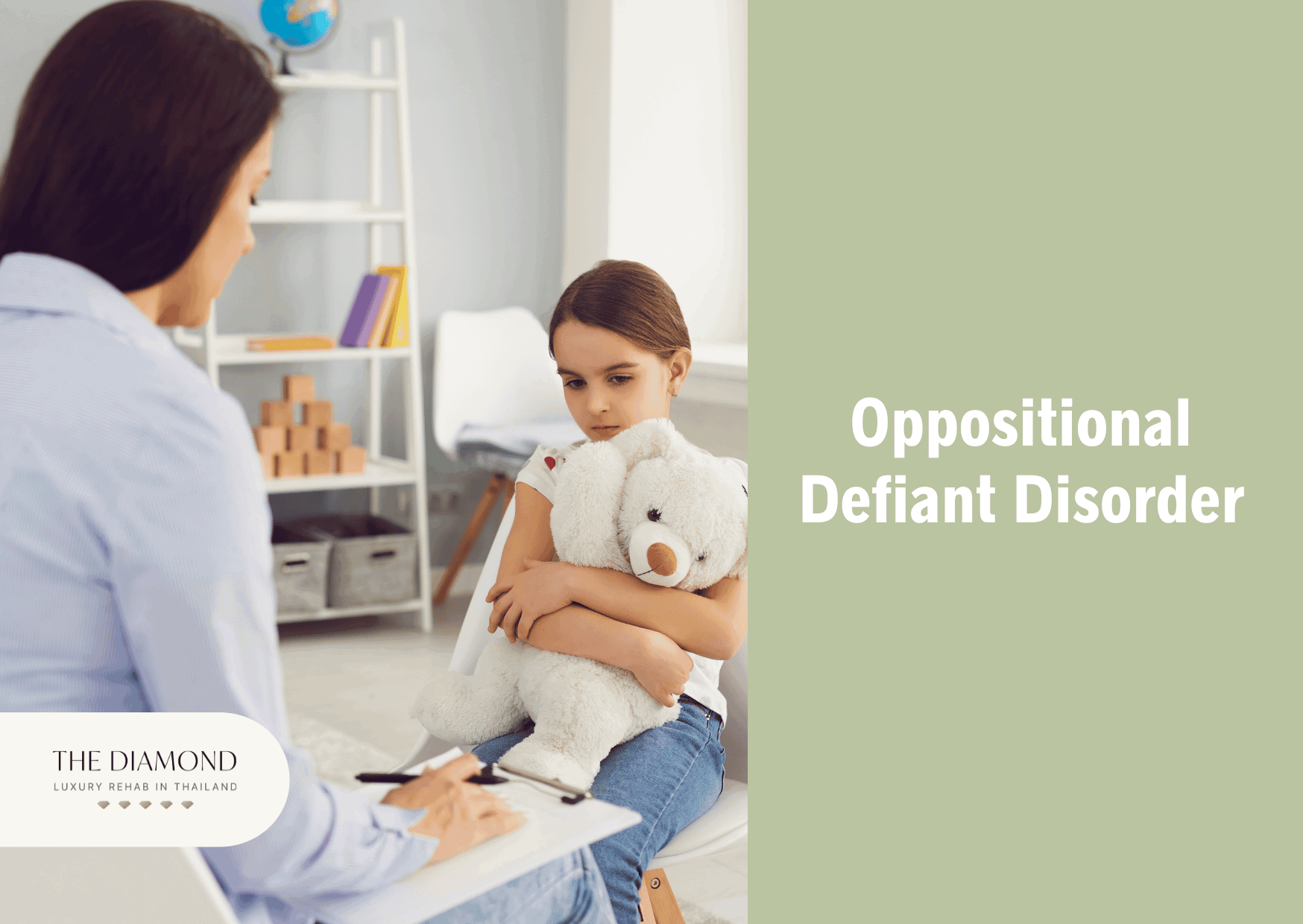
Oppositional defiant disorder (ODD) is a childhood behavioral pattern indicated by disruptive behavior. A child with ODD displays a longstanding pattern of argumentative and defiant behavior, vindictiveness, an angry mood, and a short temper.
Estimates show ODD affects 2% to 11% of children in the United States, as per an article titled, “Oppositional Defiant Disorder (ODD)” last reviewed in May 2022 by the Cleveland Clinic. The prevalence declines with increasing age.
Like other disorders, oppositional defiant disorder usually develops due to a combination of several factors including personality, temper, environment, and genes. Differences in brain areas that regulate social behaviors, problem-solving, empathy, and impulse control further contribute to the development of ODD.
Effects of ODD include lack of friendships, social isolation, school problems, and inability to develop meaningful relationships.
Healthcare providers diagnose ODD when a patient meets criteria from the DSM-5 for at least six months. When diagnosing the problem, doctors aim to determine whether there is a pattern of specific behavior, how symptoms affect daily life, the severity of symptoms, and whether they are associated with other causes. The oppositional-defiant disorder affects a patient’s social life and confidence or self-esteem. It’s difficult for someone with ODD to communicate with others. Eventually, this leads to problems at work or school and worsening of mental health and wellbeing.
4. Conduct disorder

Conduct disorder is a group of emotional or behavioral problems that include high disregard for other people. The condition usually begins in childhood or adolescence. Patients with conduct disorder find it difficult to follow the rules or behave in a socially acceptable manner.
Results from a 2018 study by Patel et al., published in the journal Behavioral Sciences (Basel, Switzerland) revealed that in the United States, the lifetime prevalence of conduct disorder is estimated to be 9.5%. In terms of gender prevalence, conduct disorder affects men more often than women, 12% and 7.1%, respectively. The average age of onset of conduct disorder is 11 years.
Conduct disorder occurs due to genetic and environmental causes. Genetic causes include damage to the brain’s frontal lobe, which regulates emotional expression, problem-solving, and cognitive skills. Environmental factors include child abuse, poverty, dysfunctional family, and a history of alcohol or drug abuse by parents.
Since a patient with conduct disorder struggles to follow the rules, the effects of this condition include increased academic failure, poor educational experience, and legal problems.
Diagnosis of conduct disorder involves a thorough evaluation. A healthcare provider diagnoses this condition when a patient exhibits a pattern of at least three behaviors associated with conduct disorder within the last six months.Conduct disorder affects a person’s mental health and causes hostility and aggressiveness. This prevents people from forming relationships with others, leading to loneliness.
5. Anxiety disorders
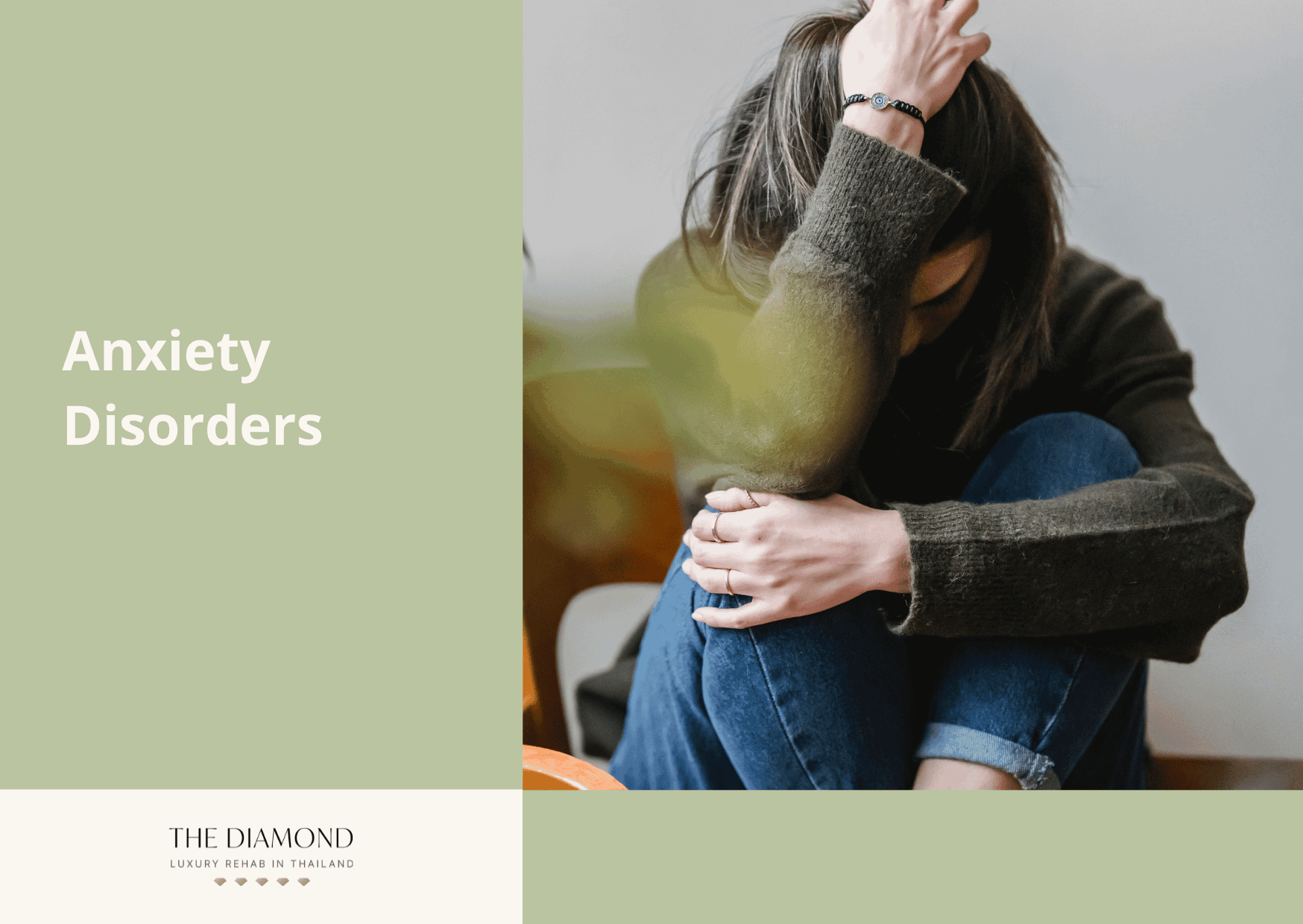
Anxiety disorders include intense, persistent, and excessive worry and fear regarding everyday situations. Different types of anxiety disorders include generalized anxiety disorder (GAD), panic disorder, social anxiety disorder, phobias, substance-induced anxiety disorder, and others. Anxiety disorders include symptoms that are so strong they affect a person’s everyday functioning.
According to an article titled, “Anxiety Disorders – Facts & Statistics” from the Anxiety & Depression Association of America, anxiety disorders impact 31.9 percent of the adolescent population aged 13 to 18.
The causes of anxiety disorders range from genetics and changes in brain chemistry to certain medications, environmental stress, and addiction withdrawal.
Effects of anxiety disorders include worsening mental health, substance misuse, digestive problems, difficulty sleeping, headache, and poor quality of life.
Diagnosis of anxiety disorders involves a complete psychological evaluation. The doctor diagnoses anxiety disorders if a patient meets the criteria from DSM-5.Anxiety disorders affect a person by making it difficult for them to try new things or take risks. Symptoms of anxiety tend to be “paralyzing” and frustrating. This translates to a patient’s relationship, social life, career prospects, and general health and wellbeing all getting negatively affected.
6. Post-traumatic stress disorder
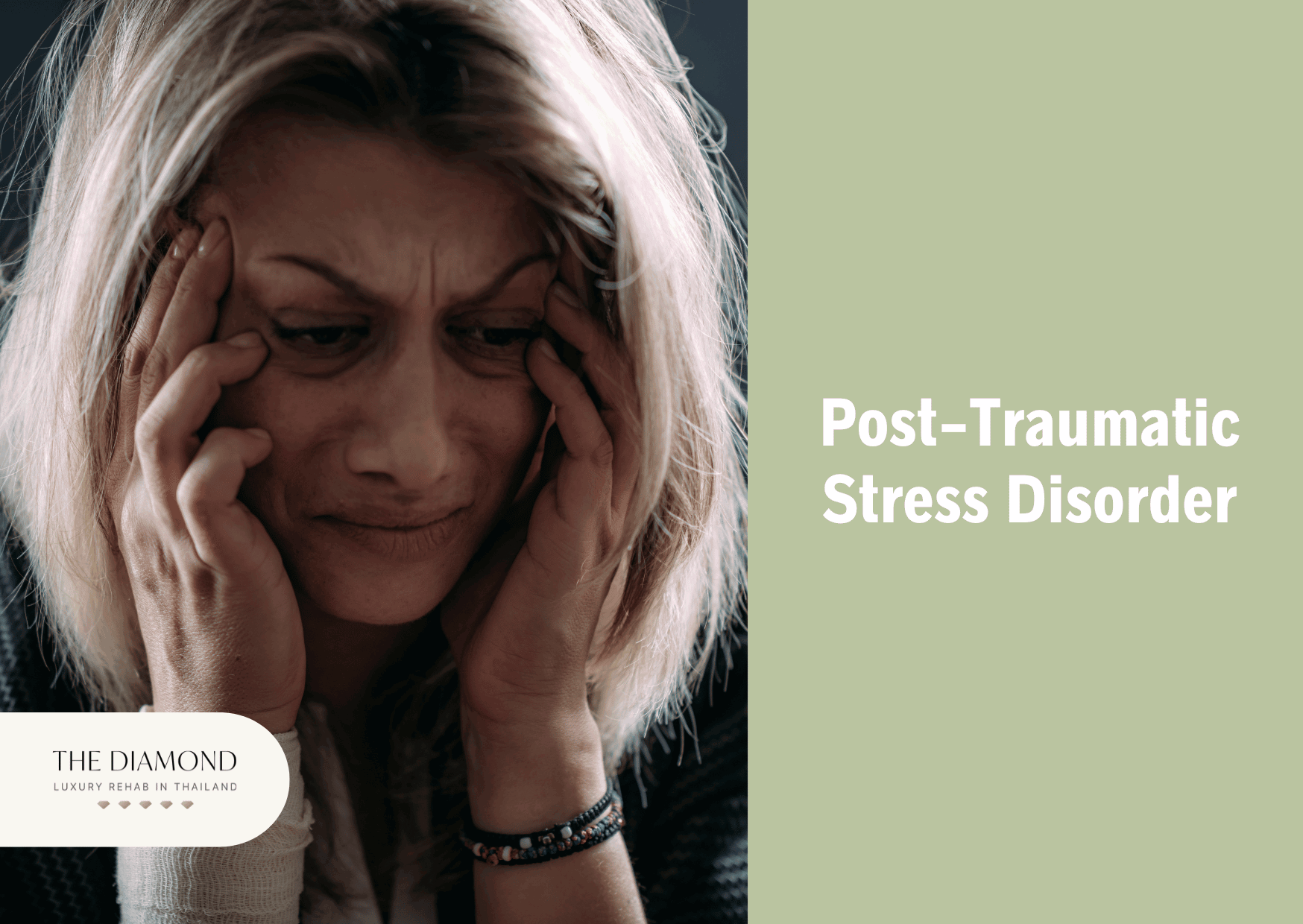
Post-traumatic stress disorder (PTSD) is a condition triggered by experiencing or witnessing a traumatic event. While it’s normal to experience problems with coping after a traumatic event, in persons with PTSD, these problems are persistent. In fact, PTSD affects a patient’s everyday functioning.
PTSD affects approximately 6% of the U.S. population, or 6 per 100 individuals, at a certain point in their lives, according to an article titled, “How Common Is PTSD in Adults?” from the United States Department of Veterans Affairs. Estimates further show that 12 million people in the United States have PTSD in any given year.
Causes of PTSD include stressful experiences, inherited mental health risks, inherited personality features, and the way the brain regulates hormones and chemicals released in response to stress.
Effects of PTSD include insecurity, depression and anxiety, suicidal thoughts, eating disorders, and substance abuse.
Diagnosis of PTSD includes a physical exam, psychological evaluation, and the use of the diagnostic criteria from DSM-5.
A person with PTSD often feels like they are reliving the same traumatic experience over and over again. This makes them feel restless, angry, and sad. Sometimes PTSD makes a person distance themselves from friends and family.
7. Depressive disorders
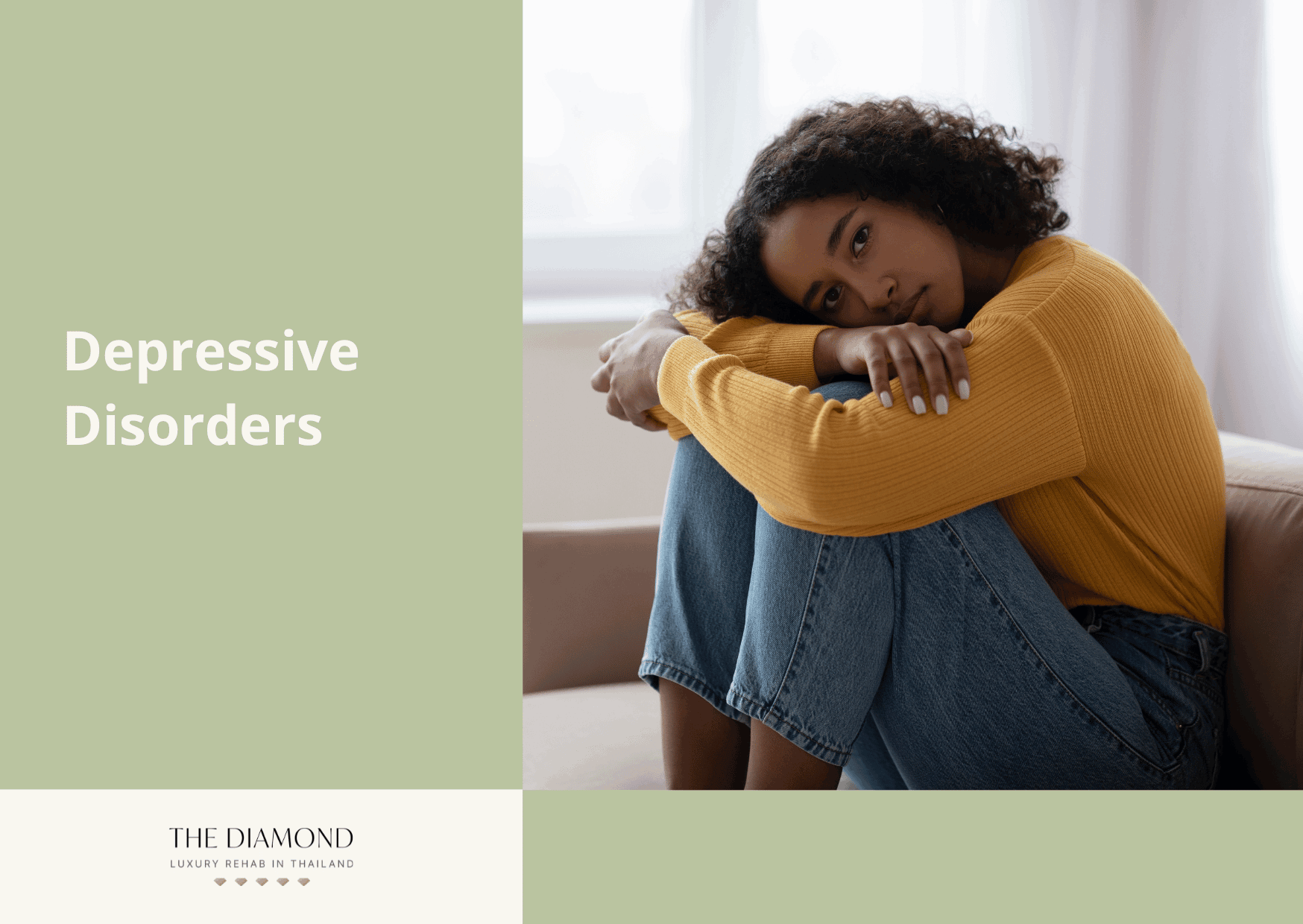
Depressive disorders include a persistent feeling of sadness, helplessness, and loss of interest. A person with depressive disorder finds it difficult to engage in normal daily activities. There are times when they even think their life isn’t worth living.
Data from a page titled, “Major Depression” last updated in July 2023 by the National Institute on Mental Health (NIH) revealed that an estimated 21.0 million American adults experienced at least one major depressive episode in 2021. This number accounted for 8.3% of the adult population in the United States. In contrast to males (6.2%), the incidence of major depressive episodes was greater among adult females (10.3%).
Several causes are behind depression. These causes include physical changes in the brain, changes in functions and effects of neurotransmitters, hormone imbalances, and inherited traits.
Effects of depression are behavioral, psychological, and physical. The latter include weight gain, pain or physical illness, diabetes, and heart disease. Behavioral effects include relationship difficulties and conflicts, social isolation, and self-mutilation. Psychological effects include worsening of mental health due to depression.
Like other mental health problems from this list, depression diagnosis includes a physical exam and psychiatric evaluation, but it additionally involves laboratory tests. Healthcare professionals use DSM-5 to diagnose depressive disorders.Depression affects how a person feels, thinks, and behaves. It tends to instill a feeling of worthlessness and other negative emotions. Eventually, these feelings intensify, which is why a person with the condition is likely to find this world too unbearable and think about suicide.

